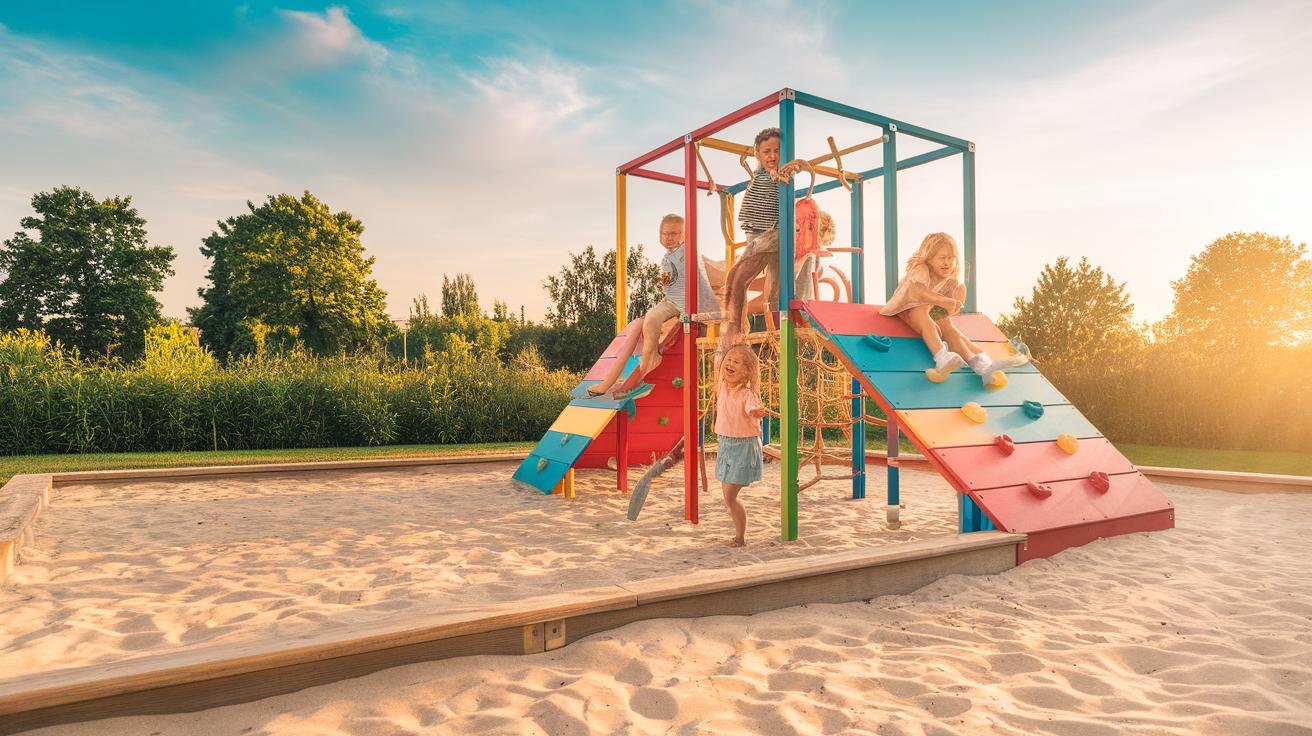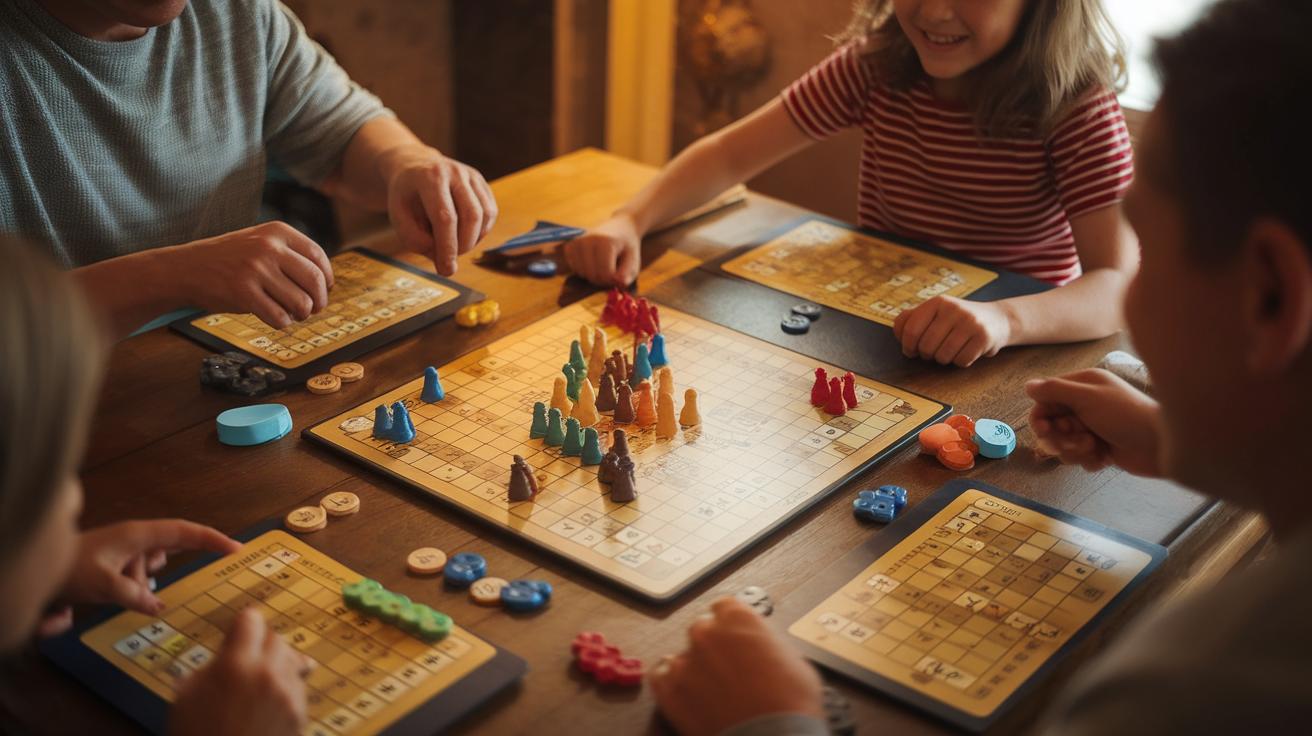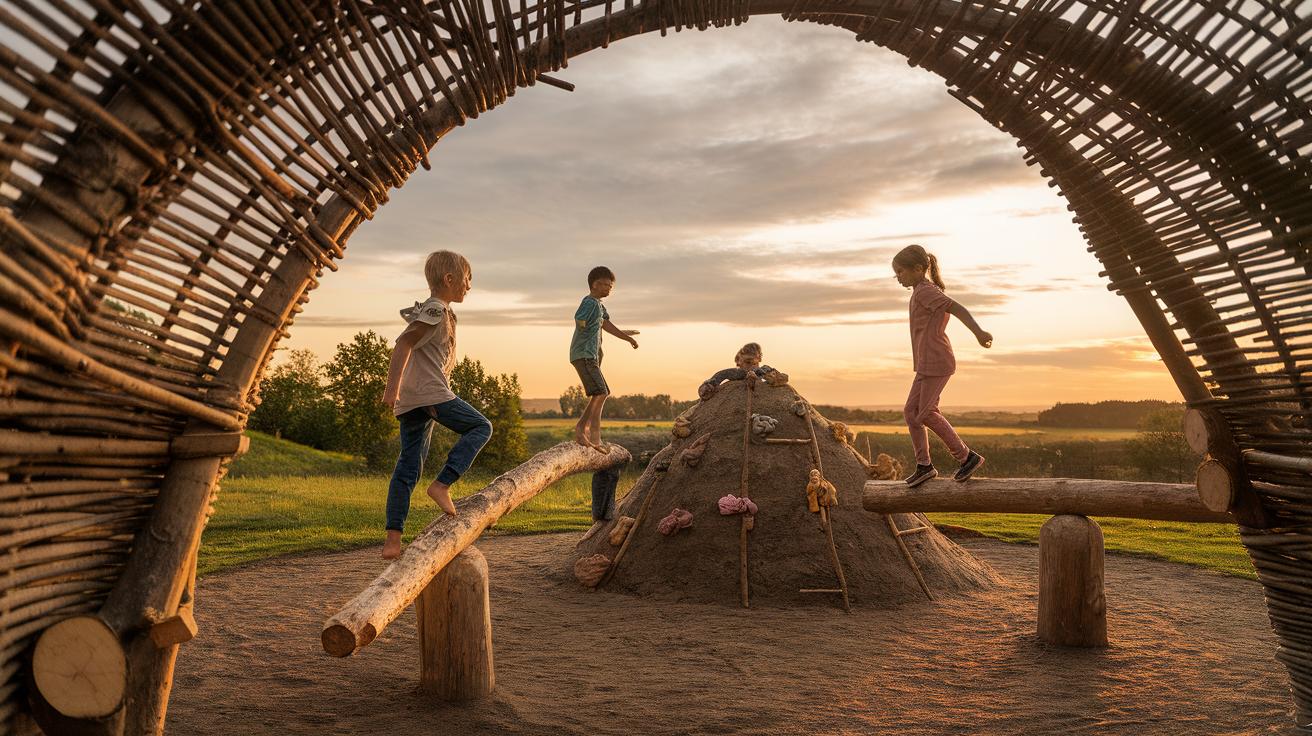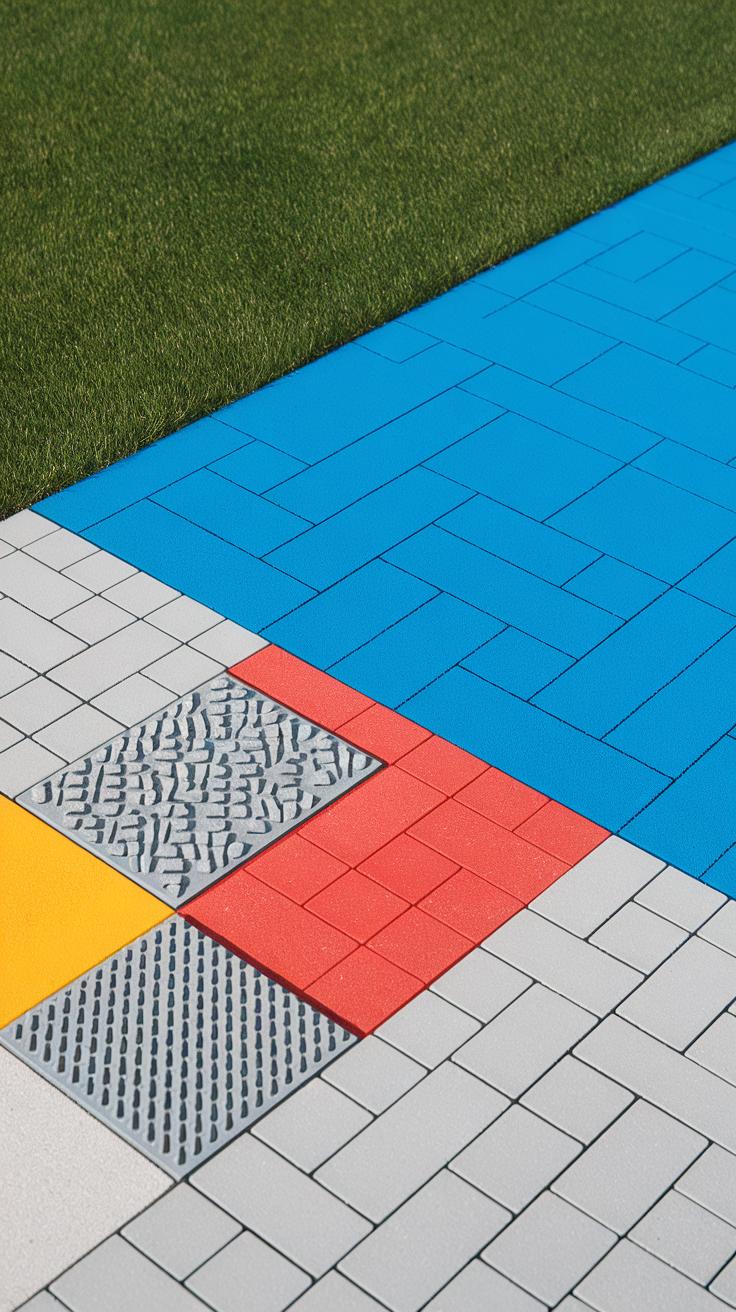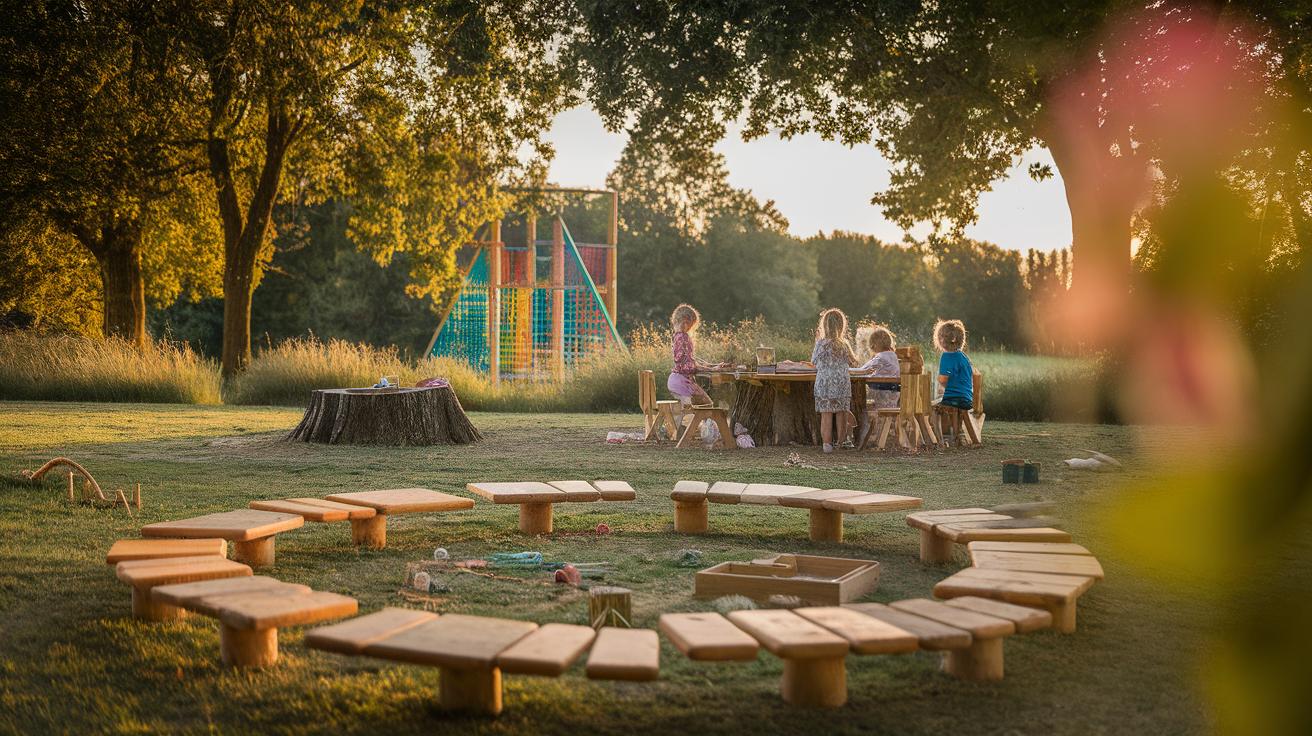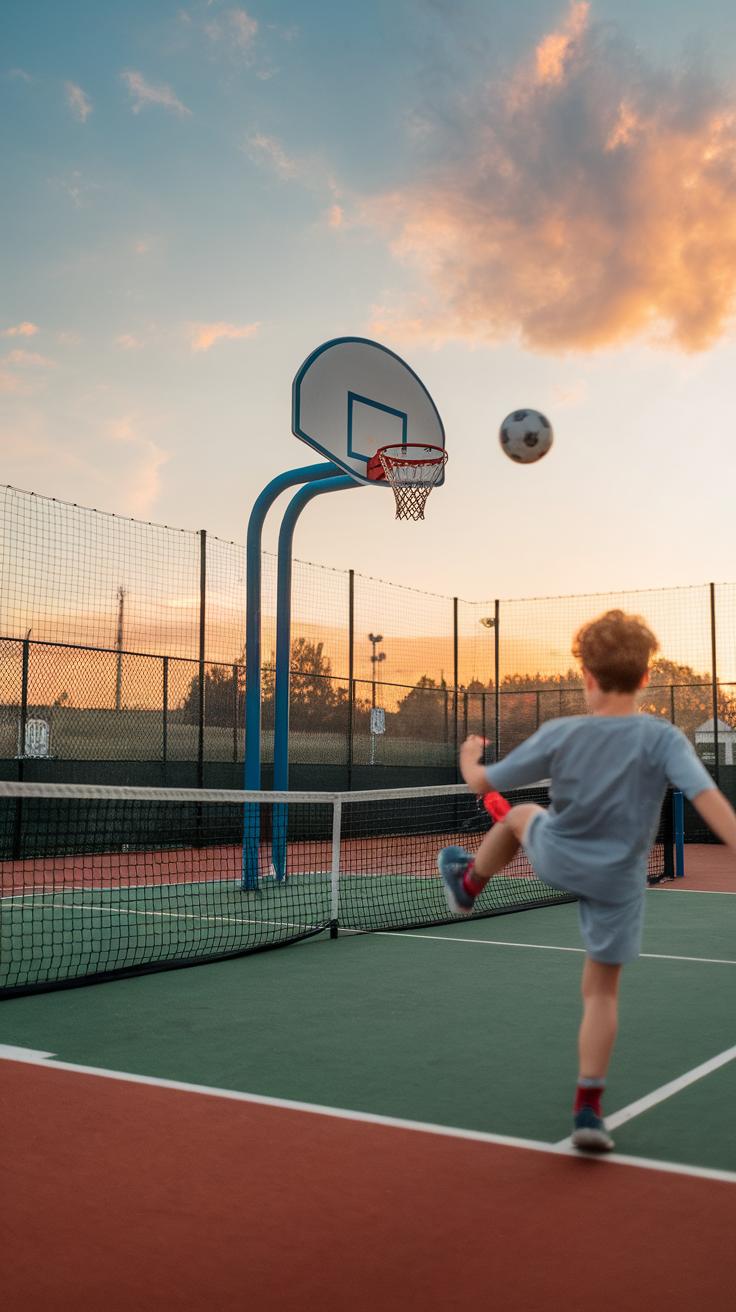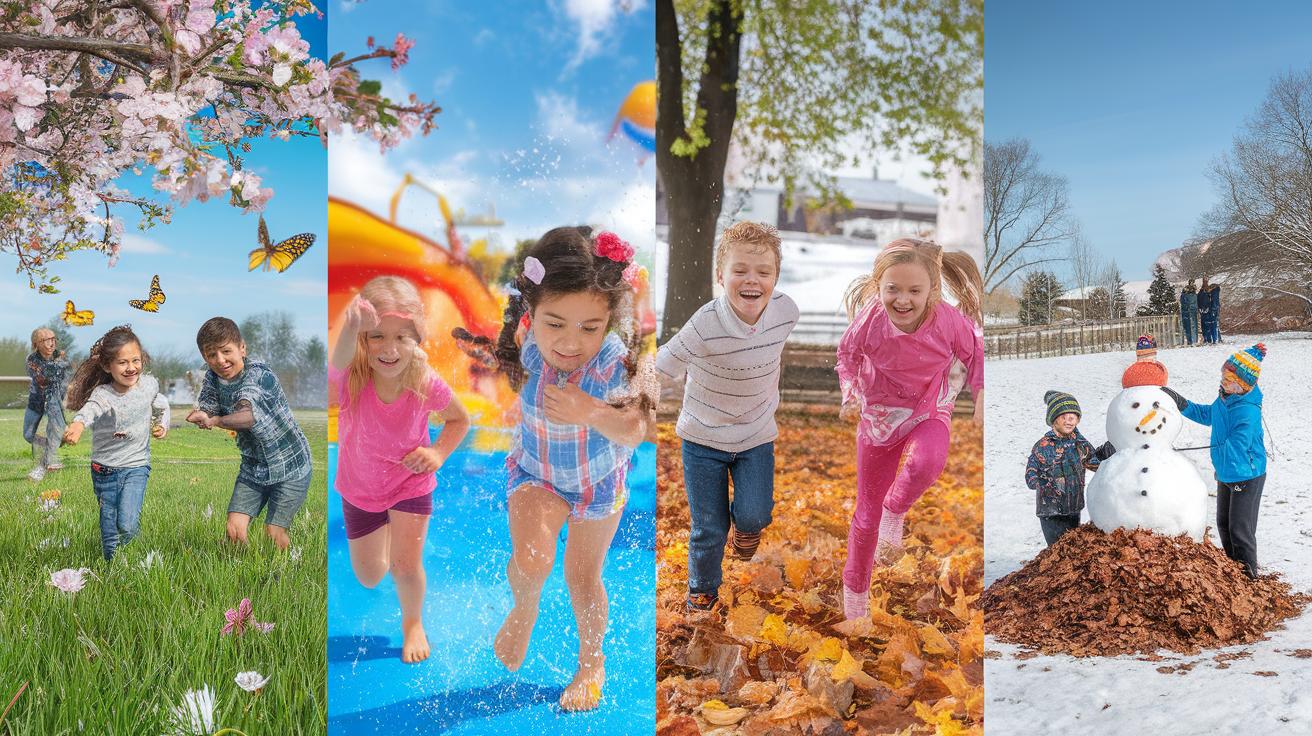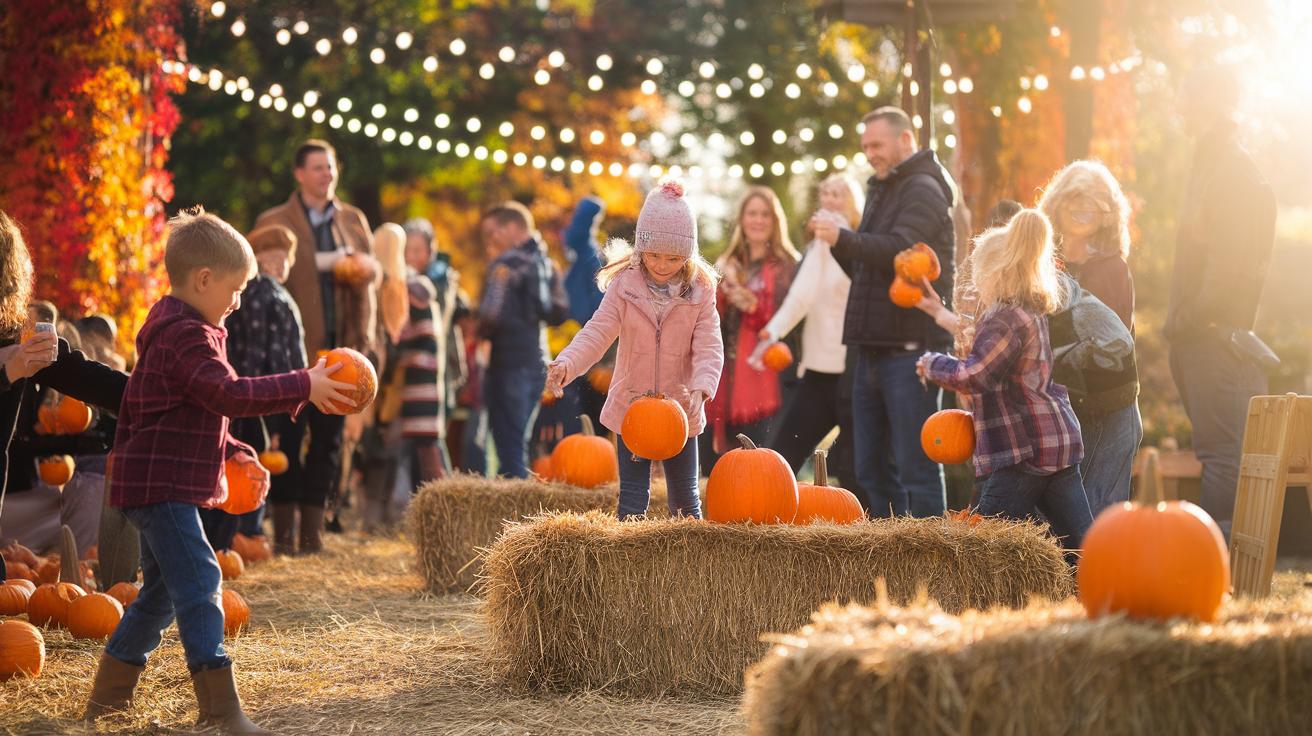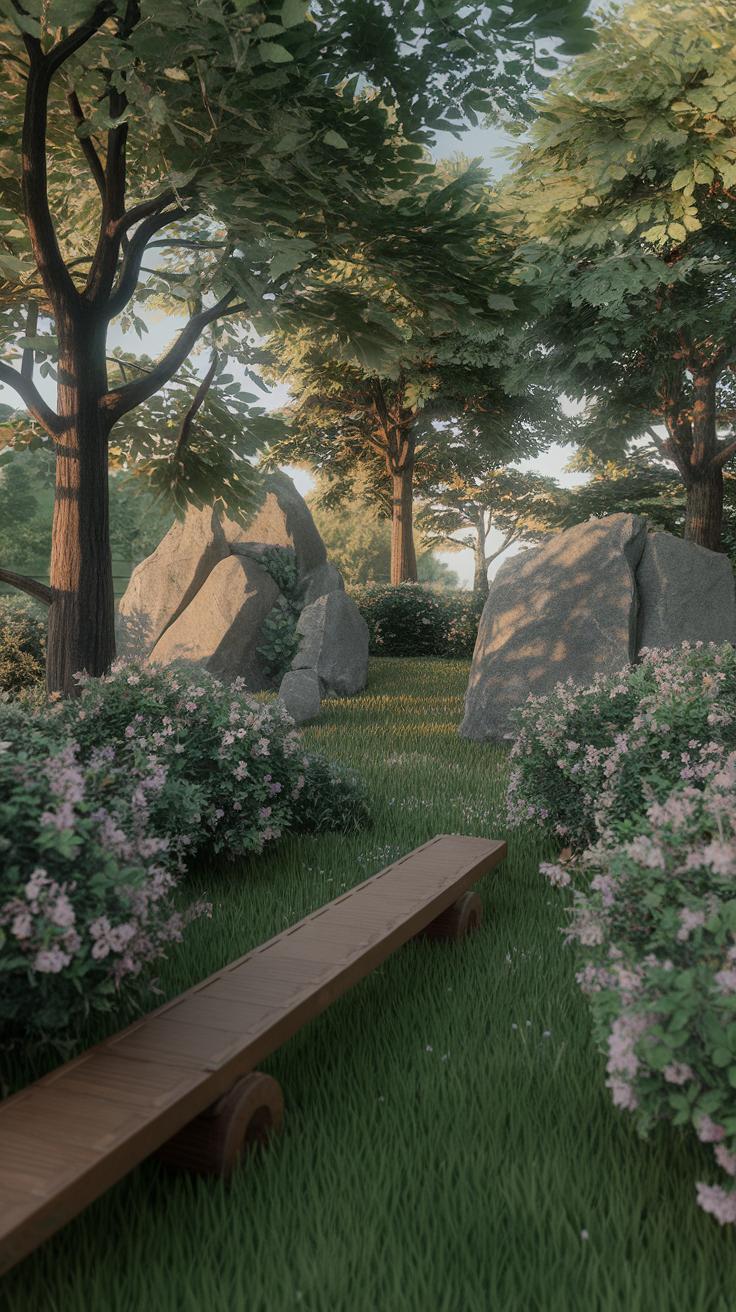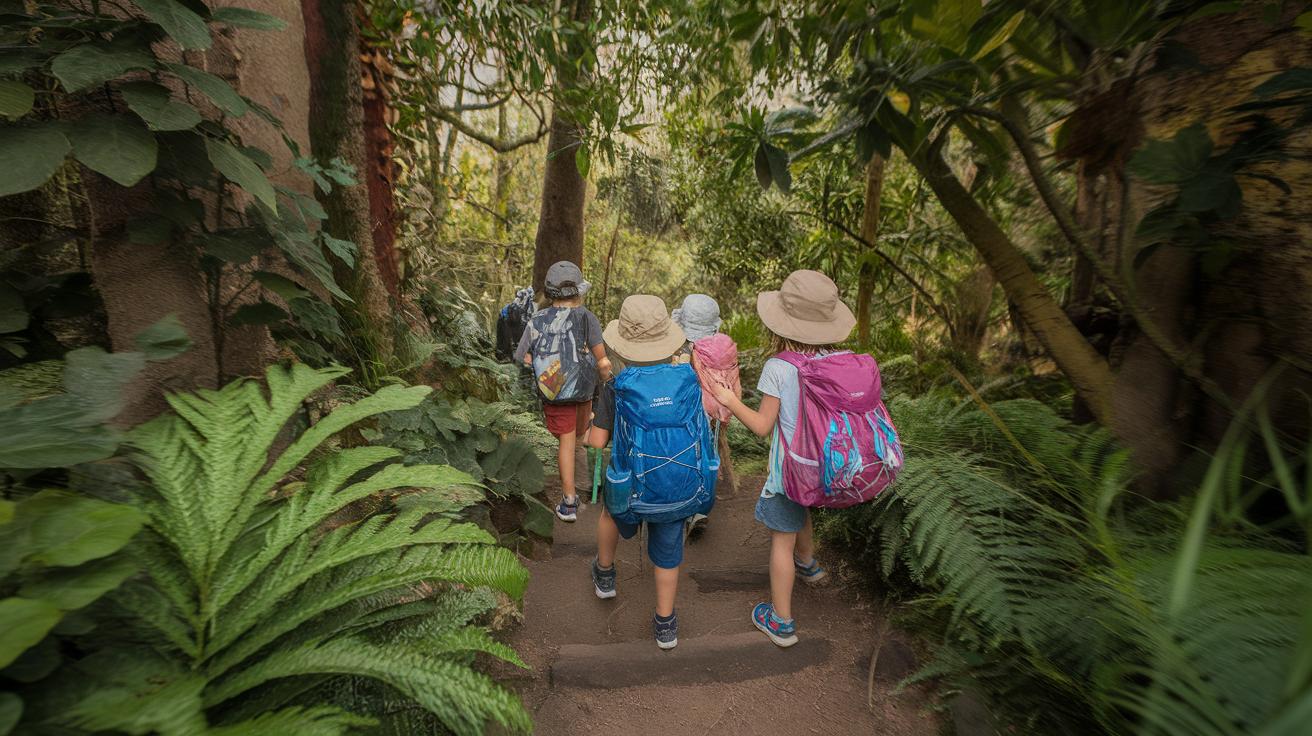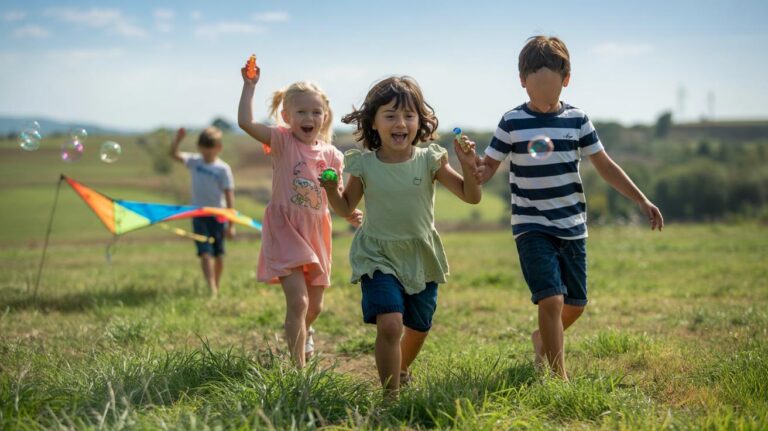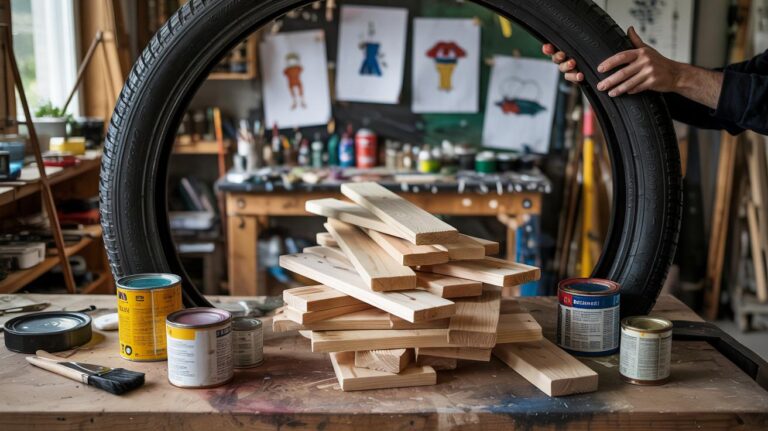Introduction
Outdoor play areas offer children a unique space to relax, play, and explore. These spaces serve as vital environments that encourage physical activity, creativity, and social interaction. Designing or transforming an outdoor play area with a focus on versatility and adventure can transform how children engage with their environment. This article explores ways you can rethink and redesign your outdoor play space to provide more than just a place to play—it becomes a hub for learning, development, and endless fun.
Reimagined play areas foster skills like coordination, balance, and teamwork while keeping children active and healthy. From installing various play equipment to creating imaginative zones, the key lies in crafting a landscape that invites continuous discovery and challenge. What features make an outdoor area exciting and safe? How do thoughtful designs meet the needs of children at different stages of development? This article will guide you through practical steps and ideas to transform your play area into a place where adventure never ends.
The Importance of Outdoor Play for Children
Outdoor play shapes how children grow in many ways. Moving outside helps children build stronger muscles and keep their hearts healthy. Fresh air and natural sunlight improve their mood and reduce feelings of stress. When children spend time outdoors, their brains work differently—they become better at solving problems and using their imagination.
Playing outside offers a wide range of activities that challenge both the body and mind. Climbing trees, running on uneven ground, or inventing games with friends all help develop motor skills and creativity. These experiences create a foundation for healthy habits and social skills that children carry into adulthood. What changes might you notice when your child spends more time outdoors?
Physical Benefits of Outdoor Play
Outdoor play pushes children to move in ways that improve their strength, balance, and endurance. Running and jumping increase cardiovascular health by getting the heart rate up. Activities like climbing or swinging develop hand-eye coordination and overall body control.
Games such as tag, obstacle courses, or riding bikes encourage children to use different muscle groups. Even simple activities like walking or playing catch promote fitness. How could you set up your yard or community space to encourage these kinds of movements every day?
Social and Emotional Growth
Playing outside offers many chances to interact with other children. Team games teach kids to work with one another and understand different viewpoints. Communication improves as they explain rules, negotiate roles, or resolve conflicts.
When children share play spaces, they learn patience and empathy. Moments of disagreement become lessons in managing emotions and finding solutions together. Have you seen children use outdoor play to build friendships and handle challenges they face?
Assessing Your Current Outdoor Play Area
Start by examining your outdoor play area closely. Look for clear signs of wear, loose boards, broken equipment, or uneven surfaces. Ask yourself, which spots feel inviting, and which seem ignored? Take note of the variety in play options—are there places for climbing, running, quiet play, and socializing? Consider how well the space adapts to different age groups and weather conditions. Do children move naturally between areas, or do they tend to stick to one section? Observe if some parts get in the sun all day, making them too hot, or if others stay damp and muddy. Understanding what works and what does not helps you prioritize improvements that enhance fun and safety.
Safety and Accessibility Checks
Check railings, steps, and surfaces to make sure they are secure and stable. Remove any sharp objects, trash, or tripping hazards like exposed roots or rocks. Ensure pathways are wide enough for wheelchairs or strollers. Test gates and fences for easy access and proper latching. Consider whether signs or instructions are clear for children and adults. Pay attention to shade and water access, especially for younger or less mobile children. Confirm that the play space complies with local safety guidelines. Making your play area easy to enter and safe reduces injuries and invites everyone to join in.
Engagement and Use Patterns
Spend time watching how children move and engage with the space during different times of the day. Which slides, swings, or sandboxes remain busy? Where do kids gather naturally? Notice if some equipment is ignored or if certain zones appear empty. Children often avoid spots that lack challenge or variety. Ask kids what they enjoy most and what they wish they had. Watch for social play versus solo activity—balancing both can boost interaction and creativity. Pinpointing these use patterns highlights where you could add new features or rearrange existing ones to spark more excitement and movement.
Choosing the Right Surface for Play Areas
Your choice of surface affects how children play, move, and stay safe. Natural grass offers a soft and familiar feel, great for running and rolling. It cools the area but needs regular watering and mowing to stay healthy. Synthetic turf lasts longer and stays green all year without extra care. It can handle heavy use but may get hot on sunny days.
Rubber mats protect against hard falls because they absorb shock. They suit areas around swings or climbing frames. These mats are easy to clean and maintain but sometimes can be expensive upfront. Modular sport court surfaces create firm, even ground perfect for ball games and running. They also drain water well, making play possible after rain.
Consider what activities your play area supports. Do children need space to run freely or a safe soft zone for climbing? Balancing safety, upkeep, and the variety of play can guide your surface choice. What surface fits your outdoor space and the adventures you want to encourage?
Natural versus Synthetic Surfaces
Natural surfaces like grass feel soft and cool. They improve air quality and allow water to soak into the ground. But grass wears out under heavy use and turns muddy when wet. That can limit play and require frequent repairs.
Synthetic surfaces resist wear and stay consistent in different weather. They save time on watering and mowing. However, some can get hot in summer and may lack the smell and feel of real grass. Safety depends on the quality and installation of the synthetic material. Would your space benefit more from nature’s feel or synthetic durability?
Surface Features That Enhance Play
Shock absorption reduces injury risks from falls. Rubber mats and quality synthetic turf excel here. Look for surfaces with good grip to prevent slips during running or climbing. Traction matters especially in sports and active play.
Weather resistance affects how often children can enjoy outdoor play. Surfaces that drain water quickly avoid puddles and slippery spots. Also, UV resistance keeps colors vibrant and materials from breaking down under sun exposure.
When choosing a surface, ask which features best support your play goals. Would extra cushioning invite more daring play? Does quick drying encourage longer outdoor time? These details power a safer, more fun outdoor playground.
Incorporating Versatile Sports Elements
Outdoor play areas can benefit greatly from adding multi-sport courts and equipment. These features expand the ways kids and adults can engage in physical activity. A simple basketball hoop invites shooting practice, team games, or free play. Marking pickleball lines on the ground provides a space for a fast-growing game that suits various ages and skill levels. Installing volleyball nets encourages cooperative play and improves coordination.
Multi-sport courts help you use space efficiently. Different groups can enjoy their favorite activities without needing separate fields. Have you noticed how kids eagerly switch from basketball to volleyball when given the chance? The variety keeps everyone interested and encourages physical development through diverse movement patterns.
Think about the range of abilities you want to support. Younger children might prefer simple games, while teens can play competitive matches. Versatile courts and equipment let you offer challenges for all. How could you arrange your outdoor area to include these options while connecting with the rest of the space?
Designing Multi-use Play Courts
Designing compact, flexible sports areas requires thoughtful planning. Start by measuring available space and imagining multiple uses. Use durable surface materials suited for different games. Drawing overlapping lines in contrasting colors allows easy transition between activities like basketball, pickleball, or four-square.
Consider portable or removable equipment like nets and goals. This allows you to rearrange the space for various activities without permanent changes. Adding benches or shaded seating near the court invites spectators and provides rest spots. Avoid clutter to keep the area safe and accessible.
Think about where sunlight falls during the day. Placing courts in partially shaded spots can prevent overheating and extend playtime. Can you design the space so it serves both active play and downtime? Flexibility means your outdoor area stays useful for many purposes and many users.
Equipment Choices for Variety
Choosing adaptable sports equipment makes the most of your outdoor play area. Adjustable-height basketball hoops accommodate different ages and skill levels. Portable volleyball nets can be set up anywhere on the court, allowing for spontaneous games. Pickleball sets often come with foldable paddles and lightweight balls for easy storage and transport.
Multipurpose equipment like combination soccer and basketball goals save space. You can install ball rebounders for solo practice or use cones and markers to create obstacle courses. These tools invite varied physical challenges, from throwing and catching to running and agility drills.
Ask yourself which sports kids in your community enjoy most. Choosing equipment that fits these interests encourages regular use. How can you arrange equipment to foster creativity and informal play? Combining versatile gear with smart layout turns your outdoor space into a hub for active fun that adapts over time.
Engaging Nature in Outdoor Play Spaces
Natural elements like trees, gardens, rocks, and water features bring alive any outdoor play area. These features turn ordinary spaces into places of exploration and learning. When children interact with a garden, they observe how plants grow and how insects play a role in the ecosystem. Trees offer shade and serve as climbing challenges, boosting physical skills while connecting kids to nature.
Rocks and water create tactile zones where children can touch, splash, and experiment. Playing with water promotes fine motor skills and encourages scientific thinking about flow and volume. Sensory play gets a big boost from these natural elements, supporting children’s development of touch, sight, smell, and sound.
Including nature also teaches environmental respect. When your kids care for a garden, they learn patience and responsibility. What natural feature could your play area use to inspire curiosity every day?
Creating Natural Exploration Zones
Building zones that invite natural exploration brings new dimensions to play areas. You might add simple nature trails that wind through trees or shrubs. Trails encourage walking, running, and discovery while connecting children to the outdoors.
Planting beds offer a hands-on opportunity for kids to help grow flowers, vegetables, or herbs. This involvement teaches gardening basics and exposes kids to natural cycles. Loose parts play with sticks, pinecones, leaves, and stones inspires creativity without plastic toys.
Try collecting natural items for building or sorting. Children can use these materials to make art or construct small habitats. How can your outdoor space support child-led creativity using the natural world around it?
Sensory and Imaginative Play Opportunities
Natural features spark senses that plastic playgrounds often miss. The roughness of bark, the coolness of water, the crunch of leaves underfoot, and the fragrance of flowers engage children fully. These tactile and visual experiences sharpen awareness and hand-eye coordination.
When kids smell herbs, listen to rustling leaves, or watch insects busy themselves, their imagination takes flight. A pile of rocks becomes a castle, a tree a pirate ship. These moments of imaginative play encourage storytelling, problem-solving, and social interaction.
How might you arrange your outdoor space to prompt children to invent stories and games using natural items? Sensory-rich natural areas help children think deeply and connect naturally with peers.
Designing for Different Age Groups
Creating outdoor play areas that serve a wide range of ages means paying close attention to equipment size and complexity. Young children need smaller, simpler structures to explore safely, while older kids look for more challenging and engaging features. Think about how toddlers move—low platforms, short slides, and easy-to-grip handles support their developing motor skills without risking injury.
Older children and tweens desire equipment that challenges their strength and coordination. Climbing walls, obstacle courses, and sports courts provide physical activity opportunities while encouraging social interaction. Safety remains key across all ages, so surfaces should absorb impacts and equipment must meet recommended standards.
How do you balance the needs of different ages in one play space? Offering varied zones or multi-use equipment can keep every child active and included. Designing thoughtfully helps build confidence, encourages movement, and supports social growth for all kids.
Features for Toddlers and Young Children
For toddlers and young children, equipment should promote motor skill development safely. Low slides, mini swings, and balance beams sized for small bodies help with coordination. Soft surfaces like rubber mats or engineered wood fiber cushion falls and keep play gentle on knees and elbows.
Including sensory panels, simple climbing steps, and tunnels can engage curiosity and build balance. At this stage, clear sightlines help caregivers supervise easily. Avoid equipment with high platforms or sharp edges that young children might not navigate well.
What types of activities help your youngest children feel confident while exploring? Play structures that match their ability enhance learning and keep fun worry-free.
Challenges for Older Children and Teens
Older kids and teens seek activities that test strength, agility, and social skills. Rock climbing walls, zip lines, and basketball courts invite physical challenges that boost fitness and teamwork. Spaces for group games and socializing encourage friendships and leadership.
Providing versatile equipment like monkey bars or fitness trails can meet growing interests. Teens often appreciate seating areas near play zones, offering places to hang out safely. How can you design spaces that encourage older children to stay active and connected outdoors?
Meeting these needs supports health and social development while making your outdoor area appealing across many years and stages.
Safety and Maintenance Essentials
Outdoor play areas invite endless adventures, but safety must always come first. Setting and following safety standards protects children and keeps the space usable for years. Regular upkeep prevents unexpected accidents and costly repairs. You need a clear routine for inspecting every part of the play area, from swings to slides, to spot wear and damage early.
Understanding which parts need frequent attention helps avoid hazards before they form. Imagine catching a loose bolt or worn rope before a child gets hurt. Think about what parts of your play area get the most use and start there. Taking time for regular maintenance not only strengthens safety but keeps the overall experience fun and inviting for kids of every age.
Routine Safety Inspections
Check equipment connections and fasteners for tightness. Loose bolts or screws pose serious risks. Look for broken or cracked components, especially on climbing areas and platforms. Examine metal parts for rust or sharp edges that can cause cuts.
Surfaces matter too. Inspect ground coverings like mulch or rubber to ensure they cushion falls adequately. Check for tripping hazards such as roots or damaged paving. Look under and around play equipment for hidden dangers. Identifying issues early is key to preventing accidents. What parts of your play area could pose a risk if neglected?
Maintenance Practices for Longevity
Keep play equipment clean. Dirt and grime can hide cracks and cause wear. Washing surfaces removes debris that might damage materials over time. Maintain soft ground surfaces by regularly raking mulch or refilling rubber mats.
Repair small problems quickly. Fix chipped paint, tighten screws, and replace worn ropes before they worsen. Seasonal maintenance can include checking drainage to avoid slippery or flooded areas. Consistent care reduces downtime and extends how long your outdoor play space stays safe and fun.
Encouraging Social Interaction Through Design
How can your play area bring children together? Thoughtful layouts make a big difference. Seating areas placed near play equipment help kids rest and chat, turning pauses into social moments. Think benches arranged in circles or small clusters to invite conversation.
Creating spots for group activities encourages cooperation. A sandbox with multiple tools, a board game table, or an open space for team games naturally draw children to play together. These shared zones support teamwork and communication.
Design elements that require collaboration boost social skills. For example, rotating panels or balance beams that need two or more kids to operate invite cooperative play. Paths that funnel children toward common areas also encourage interaction.
Ask yourself: Does your play area gently nudge children to make new friends? A layout that guides movement and offers places to gather promotes positive social exchanges every day.
Creating Spaces for Group Play
Group play zones give children a place to connect. Designate open areas with flexible surfaces like grass or rubber mats for tag, relay races, or circle games. A multi-use court can serve different sports and activities, adapting to the group’s needs.
Add features such as climbing structures with multiple entry points or swing sets where more than one child can play side-by-side. These encourage shared experiences.
Tables for crafts or group projects build teamwork while children focus on a task together. Placing these areas under shade or near seating invites longer stays and deeper engagement.
How often do your kids share a game or project in the play area? Creating inviting group corners makes these moments more frequent and fun.
Balancing Active and Quiet Areas
An engaging play space needs zones for both energy release and calm reflection. Set aside a vibrant section with equipment for climbing, running, and jumping to support physical development.
Quiet spots offer children a break from excitement. Add benches surrounded by plants, small reading nooks, or tactile gardens. These provide a place to unwind, observe, or recharge.
Balancing these zones helps kids learn self-regulation. They move between energetic play and calm pauses, fostering control over their activity levels and emotions.
Does your outdoor area support both noisy play and peaceful moments? Designing for this balance nurtures children’s social and physical skills every day.
Planning Your Outdoor Play Area Transformation
Setting Goals and Budgeting
Start by asking what you want this space to achieve. Do you want to boost children’s physical activity, encourage creativity, or improve social skills? Clear goals will guide every decision you make.
Estimate how much money you can spend. Include costs for materials, tools, and any help you might need. Research prices online or at local stores to create a realistic budget.
Consider prioritizing features. Which activities or equipment are most important? If your budget is limited, plan to add smaller items later. Think about durable materials that last longer and require less maintenance.
Set a timeline for each step. Break the project into manageable parts, so you avoid feeling overwhelmed. Having a clear plan helps you stay focused and track progress.
Community Involvement and Execution
Talk to neighbors, local schools, or family members about your plans. Their ideas and support can improve your design and share the workload. Invite volunteers for painting or building.
Create a project schedule. Assign tasks with deadlines to keep things moving. Simple tools like calendars or checklists help everyone know what to do and when.
Keep communication open. Regular updates prevent confusion and help solve problems quickly. Celebrate small wins to maintain energy and commitment.
Reflect on your efforts. Ask yourself if the changes meet your goals and how the community responds. Could you involve more people next time? What worked well during the process?
Conclusions
Designing and updating outdoor play areas offers significant benefits for children’s growth and enjoyment. Transforming these spaces by including multi-use surfaces, flexible equipment, and natural elements promotes not just physical activity but also creativity and social skills. When you create an engaging environment, children naturally seek new ways to play and interact, making the space a constant source of excitement and learning.
Your play area’s transformation can also reflect your community’s values for health, inclusivity, and sustainability. Choosing safe materials and versatile designs ensures the space remains useful and enjoyable as children grow. Thoughtful planning can provide a foundation for endless adventures, helping children develop skills that last a lifetime. How will you design your space to inspire play, exploration, and connection starting today?

